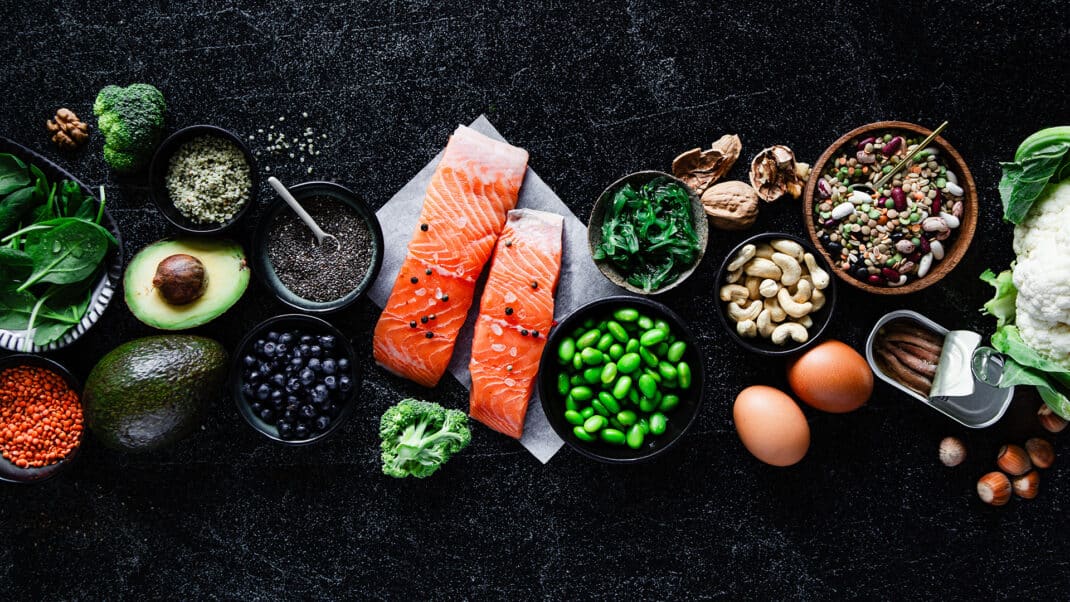Planning Makes Perfect
Cooking your own meals is vital to controlling your diet; these eight shopping and preparation tips can streamline the process.

“I’m so tired by the time I get home from work; the last thing I want to do is cook.”
“My kids don’t have the patience to watch me cook. They want their food and they want it fast!”
“I’m so hungry when I get home at night—I eat throughout the evening.”
“How do I make sure I eat a healthy lunch at work?”
Sound familiar? I hear these things all the time. Students, friends, even family members are constantly giving me well-thought-out reasons for not cooking—but because they’re not cooking, they’re not eating well. We all need a little help and encouragement, so I’m going to share eight tactics I use to stay on the healthy-eating track. These tips keep me organized and prepared for the times when life wants to throw me off my game.
Deciding you want a more healthful diet basically means you have decided you are going to start cooking more. That’s right: If you want to eat better, you have to take control of your food, and cooking for yourself is the best way to do that. Sounds simple, but without serious organization it can prove quite challenging. You will easily sabotage yourself by thinking that you can figure out dinner as you go and can decide what to cook an hour or so before you are going to eat. That strategy may work occasionally, but it rarely gets a healthful dinner on the table on a consistent basis.
Tip 1: Write It Down
Planning your weekly menu in advance may seem obvious, but writing it out and posting it somewhere visible will keep you honest and on track. This simple tip turns food shopping into a fast-and-easy errand, because the menu lets you create a shopping list with everything you will need for the week. Instead of wasting time running to the market at the last minute, you will have more time to enjoy the cooking process when you get home. And I guarantee that your focused shopping list will save you money, since you won’t buy ingredients you don’t need.
Your written menu will also keep you from making poor last-minute decisions. You will finally be able to use your cookbooks and some of those recipes that you clipped from magazines and promised yourself you’d try one day. And if you really want to track your eating, you can use an online calorie counter to analyze your recipes in advance and see how they measure up nutritionally. This may be a bit much all the time, but it’s a good exercise to try every once in a while to learn how to estimate calories and nutrients in a recipe.
Be sure to spread the wealth and take some of the planning pressure off yourself. Allow others—spouses, children, roommates—to help fill in menu blanks and assist in deciding on a nightly menu. This will get you out of a cooking rut, and you’ll never hear them whining “Chicken again?” They chose it—they eat it.
Tip 2: Embrace the Freezer
Let’s be honest: Frozen foods are convenient. But they are also laden with processed and subpar ingredients. Create your own frozen meals by cooking large batches of freezer-friendly dishes and freezing them in single-serving containers. I always have recipes for soups, stews and other freezer-friendly dishes made up and waiting in the freezer for those days when I’m low on energy or time, or when I simply do not have enough ingredients to cook a proper meal.
Freshen up frozen meals with a simple green salad or any fresh herbs you may have on hand. Homemade frozen foods are as good for you as homemade fresh foods, because few nutrients are lost in the freezing process. So start stocking that freezer.
Extra tip: Homemade frozen meals are great for children. Healthy soups, pastas and stews should be labeled with their contents and reheating times, so the kids (or their babysitter) can get a healthy meal on the table quickly and easily when you are not around.
Tip 3: Think BIG Side Dishes
You want big portions that can be stored as leftovers. At the start of the week or the end of a weekend, make double or triple the amount of a recipe so you can have something on hand for easy go-to lunches or dinners. For this, I tend to pick foods that make good “meal completers”—such as rice and beans or lentils, or grain salads like quinoa or wheat berries. These are lifesavers when I’m short on time, because they guarantee that half my meal is done before I even start cooking. If I’m late getting home from work, it’s easier for me to wrap my head around quickly searing off some chicken breasts if I know I have a bowl of roasted vegetables and wheat berries on hand to complete the meal.
Tip 4: Rub It the Right Way
It’s amazing how a simply assembled rub mix can transform a meal. I keep a variety of homemade rubs in my pantry for days when the chicken breast or fish fillet is staring me in the face and taunting me for an original idea. Spice-rubbed meat can be seared, sautéed or roasted to perfection and served with a simple salad or a quick-cooking whole grain like quinoa, or accompanied by warm corn tortillas for an impromptu taco. Quick, easy and original.
Tip 5: Pack Lunch Early
The best way to guarantee a healthy lunch is to cook it yourself. I’m not suggesting you cook your lunch at work or early in the morning; I’m simply proposing you set aside part of tonight’s dinner for tomorrow’s lunch. I find it’s best to assemble my lunch before I serve dinner, so I pack up appetizing food I can be excited about rather than saving picked-over remnants. Plus, if your family is anything like mine, every bite of food that goes on the table gets devoured, so this way I guarantee my lunch is safe.
Tip 6: Be Formal
One of the easiest ways to stay on the healthy-eating track is to eat your meals at a properly set table. This simple technique prevents you from mindlessly consuming calories, by forcing you to pay attention to what you are eating. More importantly, it marks the beginning and end of each meal. Psychologically, this creates a huge impact, because appetite is often dictated by environmental cues. If you allow yourself to eat meals while you’re lounging on your couch or sitting at your desk, you may find yourself constantly snacking.
Tip 7: Pick a Flavor Base of the Week
Preparing a different meal for each day of the week can be daunting. An easy technique to help you get through the week is to pick a recipe you can use a few times during the week. If you make a big batch of a zesty lentil salad, you can serve it over several days in various incarnations: over greens for lunch, as a side dish for one dinner, tossed with seared chicken or shrimp for a quick meal or eaten alone as a healthy snack.
Tip 8: Strengthen Your Cooking
The only way to control what you eat is to prepare it yourself. Home-cooked meals don’t have to be complicated, and they definitely don’t have to take up a lot of time. I love to cook, and I really enjoy knowing I’m feeding my family wholesome, high-quality food. A chef once told me it’s instinctive to pick the best ingredients when you are cooking for yourself, and he’s right. Think of the last time you bought a banana or an apple—I’m sure you took your time picking just the right one.
Technically, “cooking” is an action, but I think of it more like a muscle that you have to use and exercise. The more you use it, the stronger it gets. It’s easy to feel overwhelmed and exhausted by the process of shopping, prepping and cooking if you’ve never done it before. But ask experienced cooks how they feel about cooking after a long day’s work, and they will say that while they do feel tired, they can make a healthy meal quickly and easily. The more you train your cooking muscles, the easier the task becomes.
So just cook it!
Lourdes Castro
As a Registered Dietician, Lourdes is an Adjunct Professor at New York UniversityÔÇÖs department of Nutrition, Food Studies & Public Health and holds a Masters degree in nutrition from Columbia University. She is the author of three cookbooks Simply Mexican; Eat, Drink, Think in Spanish and Latin Grilling and is the director of the Biltmore Culinary Academy. Visit her website at www.slicethin.com.





